It looks like you're using an Ad Blocker.
Please white-list or disable AboveTopSecret.com in your ad-blocking tool.
Thank you.
Some features of ATS will be disabled while you continue to use an ad-blocker.
share:

Slowly filling in the Drake Equation with real numbers. Closing in on (fl)....
The subject of extraterrestrial life interests just about everyone. Especially when talking about something more complex than a microbe. Indeed there is a whole discipline devoted to questions surrounding extraterrestrial life called Astrobiology. Such is the inevitability of such life existing, many smart people within astronomy are using what we're continuing to learn about our galaxy to gauge just how crowded it is likely to be.
While this is an estimate, it is not a guess, there is sound reasoning based on what we know about exoplanets and the stars they surround now.
The 100 Million number at first glance sounds large, but 100 million is a small fraction of nearly 50 billion planets where simple, microbial life could exist.
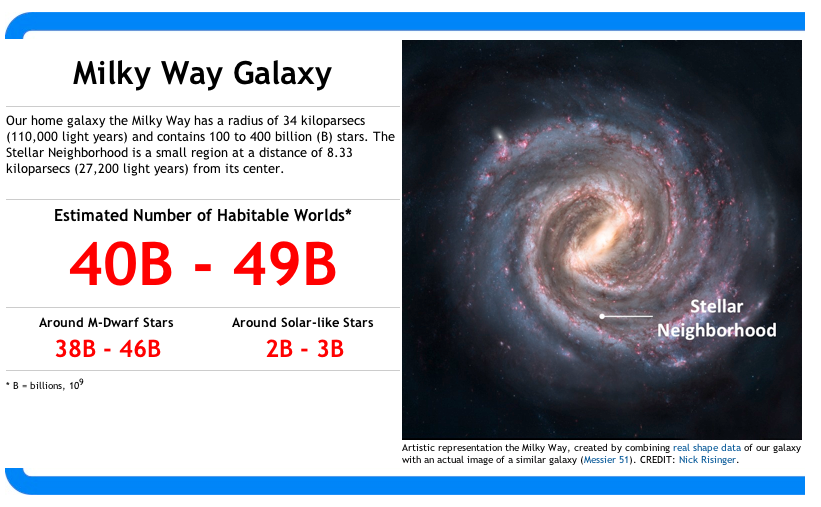
Such is the vastness of our galaxy.
To learn more will require future space telescopes such as the "ExoEarth Mapper" or "New Worlds Telescope" to directly observe such complex life.
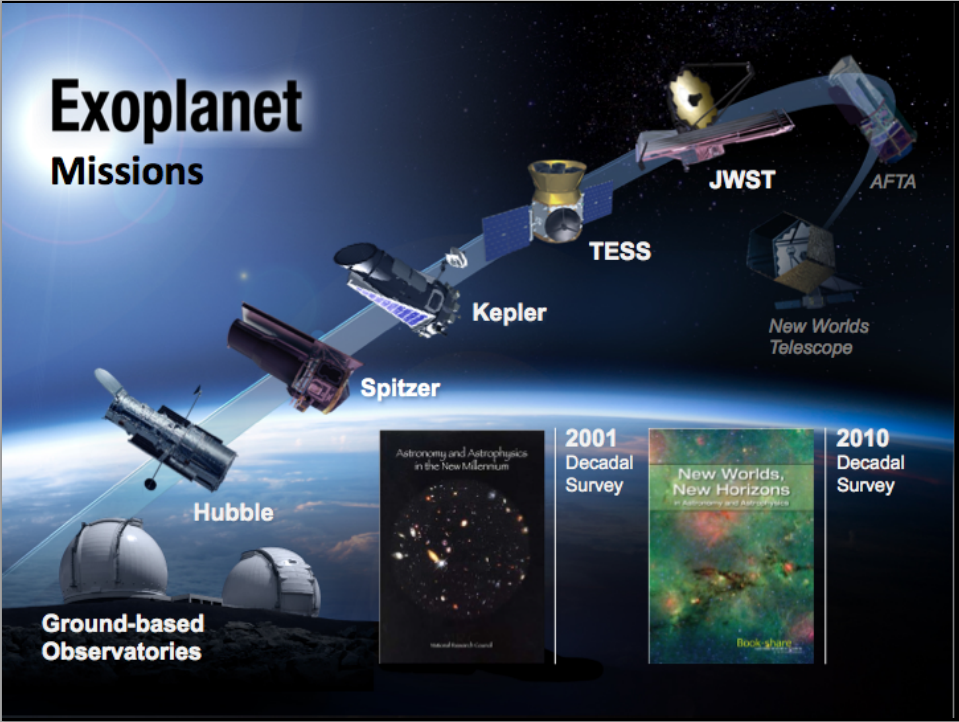
It should be noted that scientists tend to be fairly conservative in these types of estimates for various factors of the Drake Equation. So that they arrived at such a large number is due to the sheer number of planets in our galaxy.

For instance before the first exoplanets were discovered, back in the 1970s Carl Sagan estimated that the fraction of stars with planets in our galaxy (fp) would = 0.25 or 25% as you can see in the video below....
We now know that that (fp) = 1 or 100% (rather than 25% as Sagan suggested) - There is a planet for every star.
NASA's planet hunting Kepler spacecraft was designed to get a definitive number on another factor of the Drake Equation. Its primary mission was to find (ηe) the fraction of stars which have planets like the Earth.
Last fall it was announced that it succeeded in that and we now know that in our galaxy or (ηe) = 0.22 or 22% of stars like our Sun have planets like the Earth.
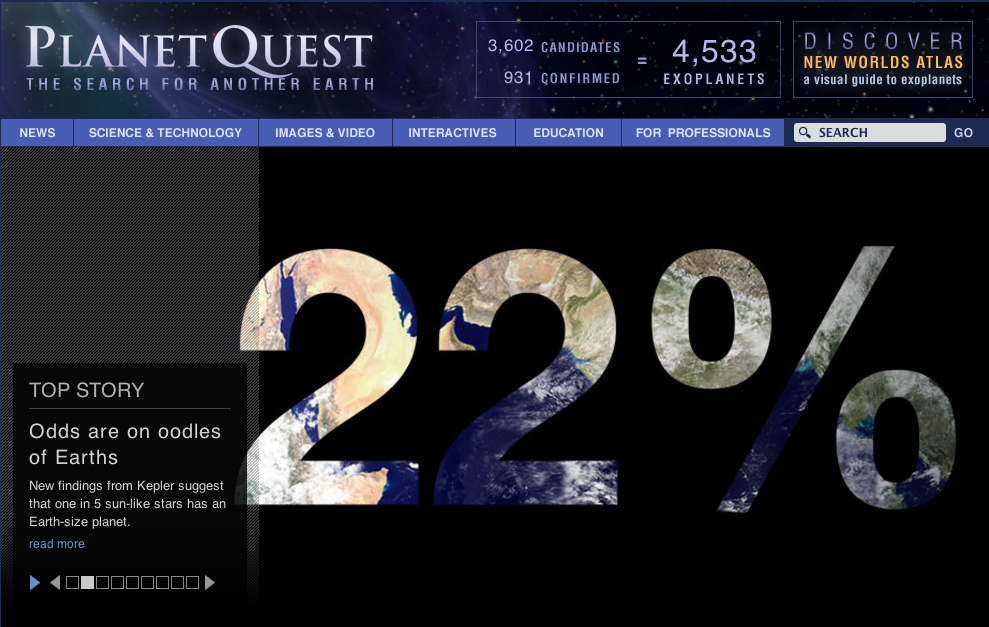
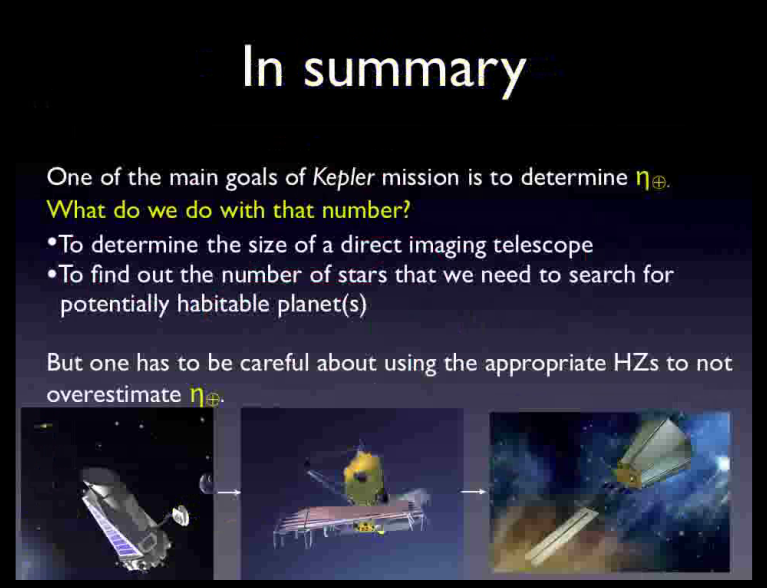
Additionally, low mass M-stars, once ruled out (back in the 70s and 80s) from hosting habitable planets have been found to perhaps be likely places to find the nearest life-bearing world.
A whopping 48% of these small, red dwarf, M-stars are considered to have a habitable zone exoplanet, again, based on data from Kepler:
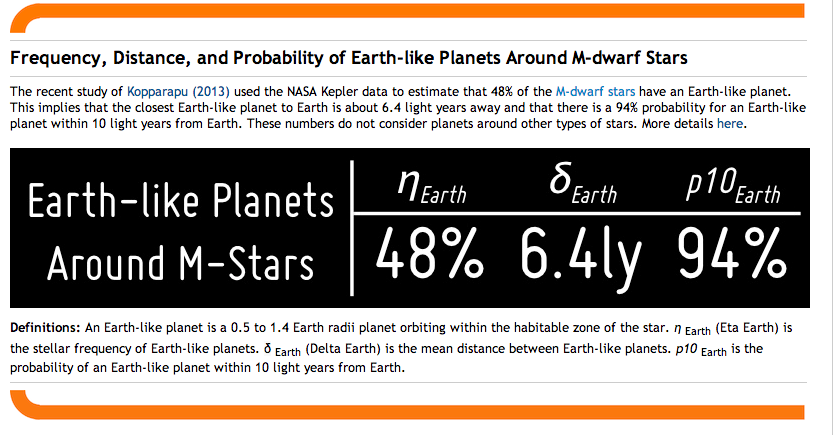
As you can see, the nearest one of these is 94% likely to be within just 10 light years of the Earth.
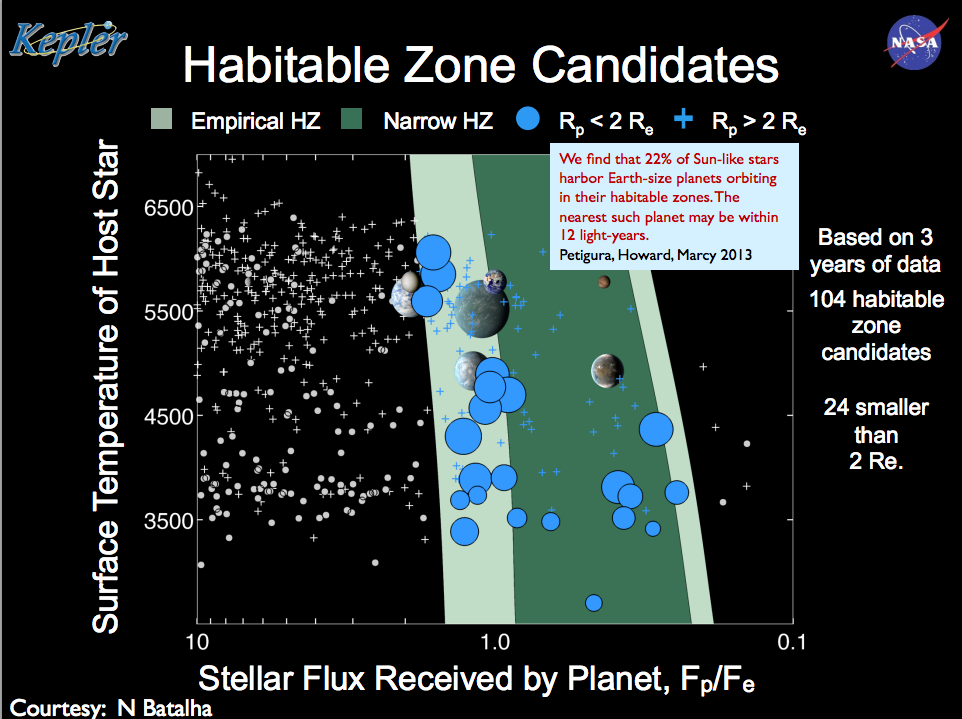
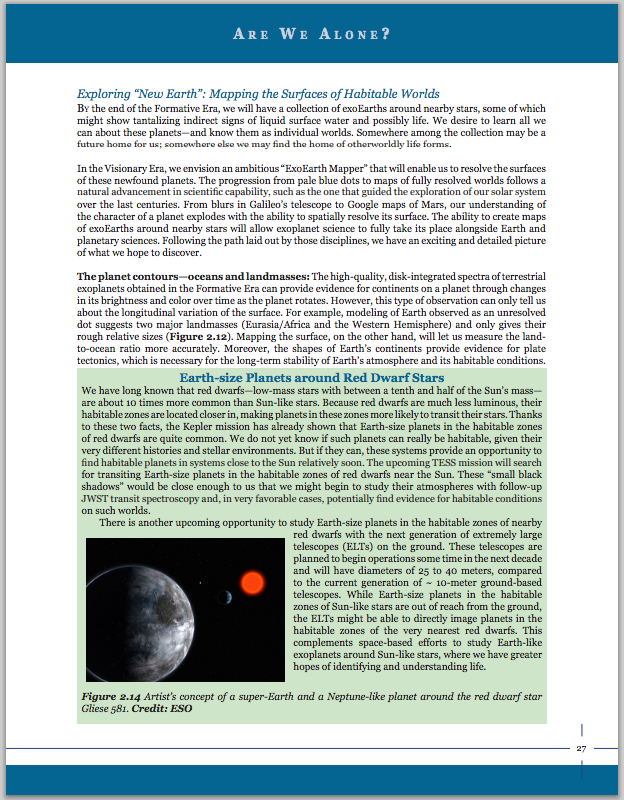
There are probably over 100 of these such worlds nearby which will be able to be studied in greater detail in the near-term for microbial life and perhaps in the future for complex life:

Much of the work these days is learning what we can to characterize exoplanets, learning more about them, their atmospheres and eventually continents and oceans to hone in on (fl) the fraction of planets with life.
Future telescopes beginning soon with the James Webb Space Telescope (JWST) will help us get closer to (fl).
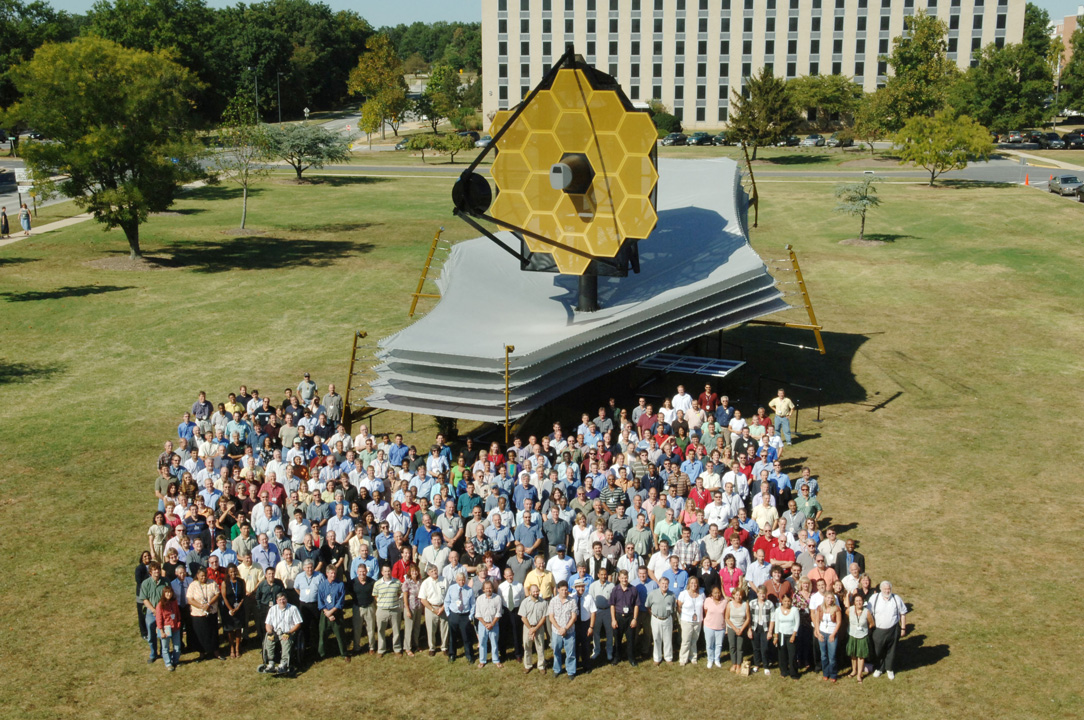
Eventually we'll be able to build one to take images like this one from NASA's EPOXI mission:
NASA's Deep Impact Films Earth as an Alien World
PASADENA, Calif. -- NASA's Deep Impact spacecraft has created a video of the moon transiting (passing in front of) Earth as seen from the spacecraft's point of view 50 million kilometers (31 million miles) away. Scientists are using the video to develop techniques to study alien worlds.
"Making a video of Earth from so far away helps the search for other life-bearing planets in the Universe by giving insights into how a distant, Earth-like alien world would appear to us," said University of Maryland astronomer Michael A'Hearn, principal investigator for the Deep Impact extended mission, called Epoxi.
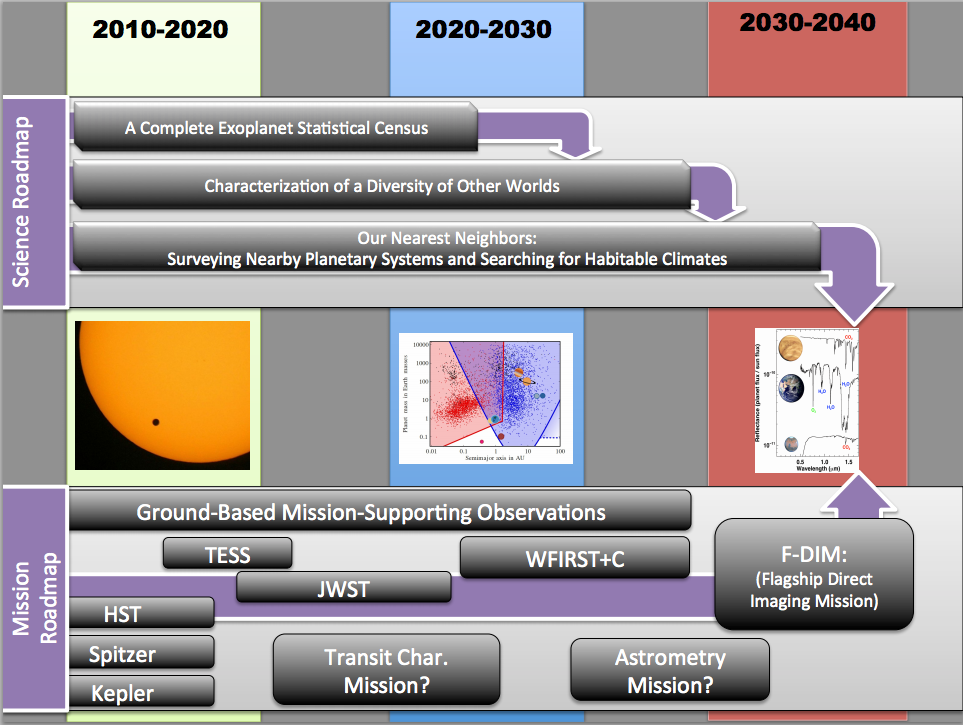
Anyway here's an excerpt from the Universe Today article referenced in the title.....
What a multitude of worlds! A new study suggests that the Milky Way could host 100 million planets with complex life, leaving no lack of choice for astronomers to look for organisms beyond Earth. The challenge is, however, that these worlds might be too far away from us to do much yet.
“On the one hand, it seems highly unlikely that we are alone,” stated Louis Irwin, lead author of the study and professor emeritus at the University of Texas at El Paso. “On the other hand, we are likely so far away from life at our level of complexity, that a meeting with such alien forms is extremely improbable for the foreseeable future.”
The figure came from studying a list of more than 1,000 exoplanets for metrics such as their density, temperature, chemistry, age and distance from the parent star. From this, Irwin’s team formulated a “biological complexity index” that ranges between 0 and 1.0. The index is rated on “the number and degree of characteristics assumed to be important for supporting multiple forms of multicellular life,” the research team stated.
Assuming that Europa (a moon of Jupiter believed to have an ocean below its ice) is a good candidate for life, the team estimated that 1% to 2% of exoplanets would have a BCI that is even higher than that. So to translate that into some estimates: 10 billion stars in the Milky Way, averaging one planet a star, which brings us to 100 million planets minimum.
Read more at Universe Today
This has lead many leading scientists to pretty much conclude not only that it is almost certain we're not alone but that we live in a populated, perhaps highly populated Milky Way galaxy:
Here's the full Congressional hearing:
And Seth's thoughts afterward:
Of course Seth's efforts will be boosted by the Square Kilometer Array (SKA) due to come online sometime in the next decade. If there are any nearby aliens using the equivalent of radar then it should be able to detect them:
From the SKA's webpage...


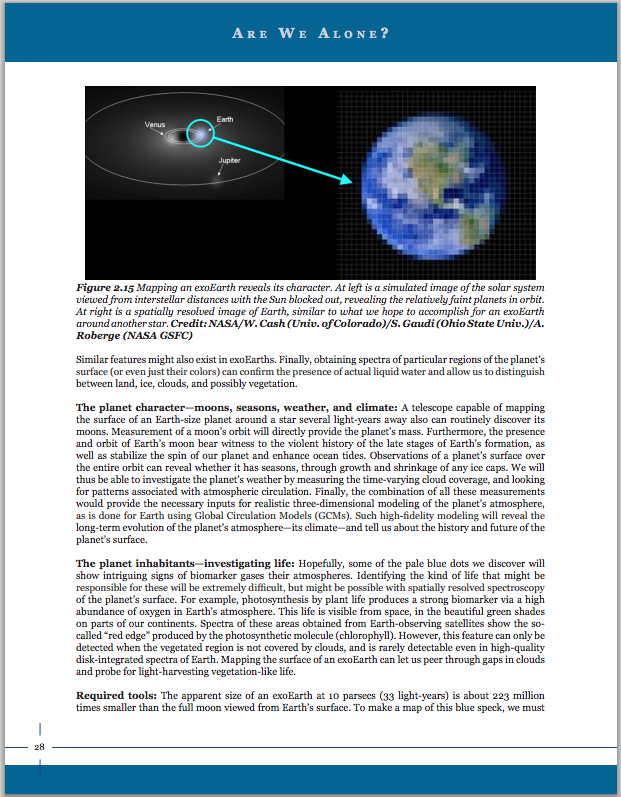
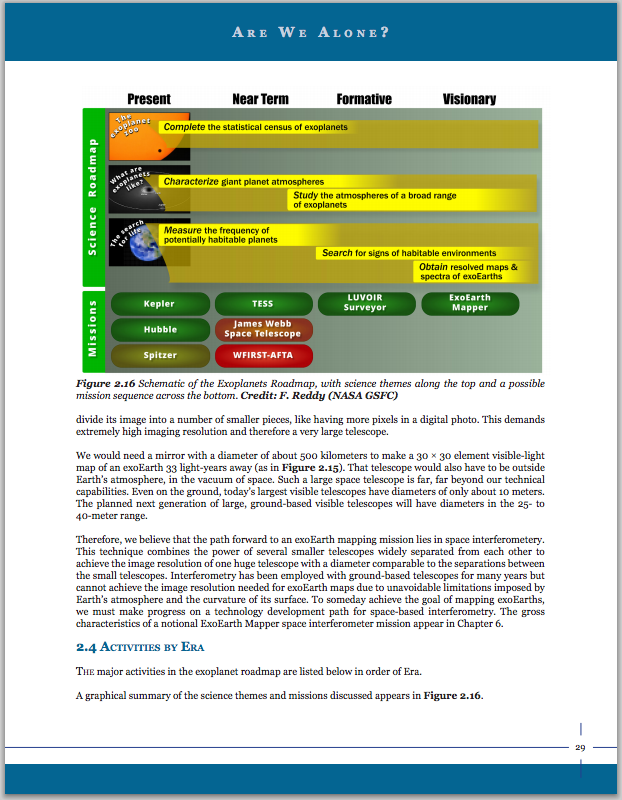
edit on 31-5-2014 by JadeStar because: (no reason given)
All of those potentially habitable worlds out there and not one within our reach.
Good thing too... For the inhabitants of those worlds.
Good thing too... For the inhabitants of those worlds.
a reply to: JadeStar
S&F
What an amazing thread you created.
I will watch the videos later, but enjoyed the reading material very much.
Do you think they will find life on another of those planets or another habitable planet like ours in our lifetime ? (within ca. 50 years)?
No other topic excites me more than space travel, so thanks again for the great read.
Have a great weekend JadeStar.
Where is all that technology they had in Star Trek?
Top 10 Star Trek technologies that came true:
electronics.howstuffworks.com...
Some of them have already come true (Life imitating art.)but the good stuff still needs to be invented.
I know they are currently working on the instantaneous transporter. I'm just hoping that with how rapidly we are advancing in technology finding life on other planets/ habitable planets will be easier for us to detect in the near future.
Now let me go read more about the Square Kilometer Array.
S&F
What an amazing thread you created.
I will watch the videos later, but enjoyed the reading material very much.
Do you think they will find life on another of those planets or another habitable planet like ours in our lifetime ? (within ca. 50 years)?
No other topic excites me more than space travel, so thanks again for the great read.
Have a great weekend JadeStar.
Where is all that technology they had in Star Trek?
Top 10 Star Trek technologies that came true:
electronics.howstuffworks.com...
Some of them have already come true (Life imitating art.)but the good stuff still needs to be invented.
I know they are currently working on the instantaneous transporter. I'm just hoping that with how rapidly we are advancing in technology finding life on other planets/ habitable planets will be easier for us to detect in the near future.
Now let me go read more about the Square Kilometer Array.
a reply to: JadeStar
What a fantastic thread!! S&F!!
There are too many billion possibilities of finding another 'Earth', with life. However, it is very likely that their evolution happened differently, and those planets are populated with 'strange' forms of life.
One day in the future we might end up landing on a planet with humanoids just like us, but still primitive......and they will tell tales of the 'Gods' that visited them and taught them amazing things........miracles, they called them.
What a fantastic thread!! S&F!!
There are too many billion possibilities of finding another 'Earth', with life. However, it is very likely that their evolution happened differently, and those planets are populated with 'strange' forms of life.
One day in the future we might end up landing on a planet with humanoids just like us, but still primitive......and they will tell tales of the 'Gods' that visited them and taught them amazing things........miracles, they called them.
originally posted by: Rainbowresidue
a reply to: JadeStar
S&F
What an amazing thread you created.
I will watch the videos later, but enjoyed the reading material very much.
Do you think they will find life on another of those planets or another habitable planet like ours in our lifetime ? (within ca. 50 years)?
Yes. I'd bet on it actually. It would surprise me if it even took that long.
Sara Seager, a very well known exoplanet expert who wrote the book on Exoplanet Atmospheres suggests we'll find it within the next 30 years.
My area of study in college is astronomy, specifically with an eye towards this field. I've shared a lunch with Seth Shostak once and he feels it is quite likely that we'll know within 20 years. And he tends to be on the conservative side of things, not prone to making predictions.
Both Sara and Seth's predictions are based on the technology that we're assembling now in the search. In Sara Seager's case, there are plans for space telescopes which could detect the signature signs of at least microbial life in the atmospheres of nearby exoplanets.
In Seth Shostak's case, the Square Kilometer Array could detect the alien equivalent of an airport radar within 100 light years distant and something like the Arecibo Planetary Radar (which we use to take pictures of near Earth asteroids), many thousands and thousands of light years away.
Also there are ideas to use future telescopes to look for things like the waste heat a complex civilization might give off on its planet or in its star system and even to detect the distinct signature of artificial city lights on an exoplanet's night side when we can take detailed images of nearby Earths.
Consider this for a moment:
At the beginning of the 20th Century these were the Top 3 Astrobiological Questions (had astrobiology existed yet):
1. Can binary (double, triple or quadruple) stars have planets in stable orbits?
2. Do other stars have planets?
3. If they do, how many are planets like the Earth?
For most of the century all three of those questions went unanswered. In the 1990s we learned the answer to the first two. (1. Yes, 2. Yes) and it would only be less than 20 years later before we knew the answer to question 3 (22%).
Today firmly in the 21st century the Top 3 Astrobiological Questions are:
1. Where is the nearest Earth sized which can be studied in great detail?
2. Where is the nearest planet which has life?
3. How many planets which have life develop complex or even technological life?
The answer to question 1 is likely to come from NASA TESS mission due to be launched and begin operations in 2017.
The answer to question 2 might come as early as the early to mid 2020s with other telescopes.
The answer to question 3 may come soon after exoplanet mapping telescope missions are launched. (late 2020s perhaps sooner if SETI on the Square Kilometer Array detects something interesting and repeating.)
No other topic excites me more than space travel, so thanks again for the great read.
Have a great weekend JadeStar.
Where is all that technology they had in Star Trek?
Top 10 Star Trek technologies that came true:
electronics.howstuffworks.com...
Some of them have already come true (Life imitating art.)but the good stuff still needs to be invented.
I know they are currently working on the instantaneous transporter. I'm just hoping that with how rapidly we are advancing in technology finding life on other planets/ habitable planets will be easier for us to detect in the near future.
Now let me go read more about the Square Kilometer Array.
Thanks.
Here's another Star Trek reference. Remember "M-class planets"?
Well there is an actual real scale to measure the habitability of exoplanets based on temperature and other factors:
As you can see, Earth is an "M-class planet"
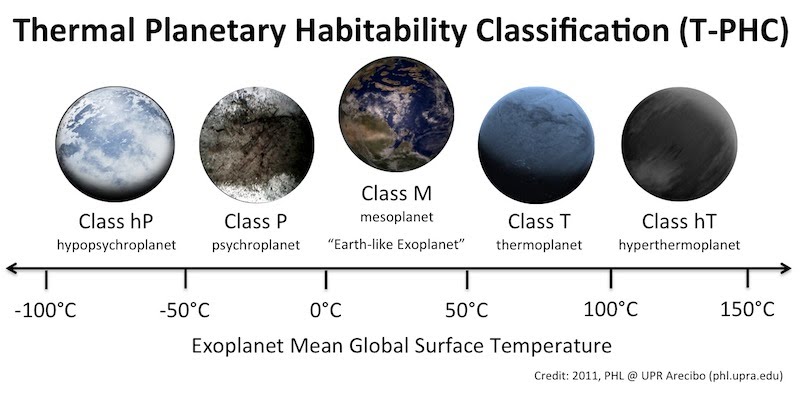
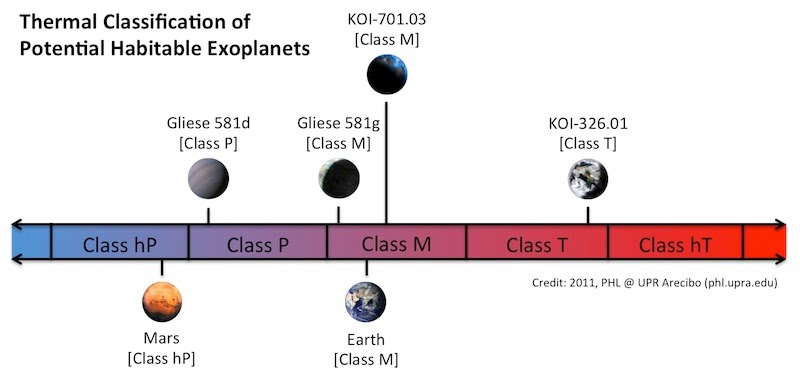
So , the real Star Trek is beginning in a small way. We already are planning on "Stellar Cartography" with missions like the European Space Agency's GAIA mission to make a 3-D map of our galaxy and future Exoplanet mapping telescopes.
I suspect that in 50 years we'll know which stars you can point to in the sky have life bearing worlds.
Who knows, we might even know where our closest technological neighbors are.
edit on 31-5-2014 by JadeStar because: (no reason given)
a reply to: Agartha
I agree with you 100%
I have read many theories how the 'gods of the past'that came down to earth to teach us, could have been beings from a more advanced civilization from another planet. And I say, why not?
I think we have reached a step in our civilization where our next step should be exploring space,and finding other planets we can settle on in the future to keep the species alive once our earth becomes un-habitable to us.
I know we should also try working on keeping our planet habitable, but that's for another thread.
It'd be better for our survival if we had more planets to live on. IMO.
a reply to: JadeStar
Star for you!
Thanks again for the explanation JS,and for answering my questions.You make me very optimistic.
I agree with you 100%
I have read many theories how the 'gods of the past'that came down to earth to teach us, could have been beings from a more advanced civilization from another planet. And I say, why not?
I think we have reached a step in our civilization where our next step should be exploring space,and finding other planets we can settle on in the future to keep the species alive once our earth becomes un-habitable to us.
I know we should also try working on keeping our planet habitable, but that's for another thread.
It'd be better for our survival if we had more planets to live on. IMO.
a reply to: JadeStar
Star for you!
Thanks again for the explanation JS,and for answering my questions.You make me very optimistic.
edit on 31/5/2014 by Rainbowresidue because: (no reason given)
edit on 31/5/2014 by Rainbowresidue because: (no reason
given)
Jade,
enjoy your threads amongst the many silly and pseudo-scientific threads here...
But did you really just say there is a planet for EVERY star? Just double-checking.
enjoy your threads amongst the many silly and pseudo-scientific threads here...
But did you really just say there is a planet for EVERY star? Just double-checking.
a reply to: Rainbowresidue
I remember reading this crazy theory once that those gods from the past were not 'aliens' but 'us' from the future......although I look to science for answers, there are so many possibilities out there and I enjoy expanding my mind with them.
I remember reading this crazy theory once that those gods from the past were not 'aliens' but 'us' from the future......although I look to science for answers, there are so many possibilities out there and I enjoy expanding my mind with them.
As or giving some more speculative input...the idea of life on other planets fascinated me since I was a kid.
On one hand it's clear that (complex) life on other planets MAY be extremely different from life as we know it since many factors will influence life's appearance (eg gravity, climate, sun/star distance, atmosphere make-up etc.)...and of course we can speculate so far as to theorize really "far out" life forms which would differ fundamentally from us.
On the other hand, there is also reason to believe that the same principles of how life evolves would also apply to other planets, one might speculate whether extremely complex life on other planets for some or the other reason might always "sort-of" turn out humanoid/humanoid-like. This opens up the fascinating idea that, say, shows like Star Trek etc. where "aliens" are usually portrayed as humanoids but with SOME relatively minor differences..might not even be that far off.
So in other words, we may some day discover intelligent life on a planet and they may indeed look "human", may perhaps even developed their language, religion etc. like we did here...but then maybe have big ears or a big forehead as distinct feature or something : ) It's less likely (IMHO) that super-intelligent life on a planet would look like, say, rats ..or cats....but then of course I may be wrong : )
On one hand it's clear that (complex) life on other planets MAY be extremely different from life as we know it since many factors will influence life's appearance (eg gravity, climate, sun/star distance, atmosphere make-up etc.)...and of course we can speculate so far as to theorize really "far out" life forms which would differ fundamentally from us.
On the other hand, there is also reason to believe that the same principles of how life evolves would also apply to other planets, one might speculate whether extremely complex life on other planets for some or the other reason might always "sort-of" turn out humanoid/humanoid-like. This opens up the fascinating idea that, say, shows like Star Trek etc. where "aliens" are usually portrayed as humanoids but with SOME relatively minor differences..might not even be that far off.
So in other words, we may some day discover intelligent life on a planet and they may indeed look "human", may perhaps even developed their language, religion etc. like we did here...but then maybe have big ears or a big forehead as distinct feature or something : ) It's less likely (IMHO) that super-intelligent life on a planet would look like, say, rats ..or cats....but then of course I may be wrong : )
edit on 5/31/2014 by
NoRulesAllowed because: (no reason given)
a reply to: Agartha
Oh, I remember reading about that too.
You know what?
I'm keeping an open mind, until we get definite answers to that.
Even though Mars isn't ideal place for us to live, I'm also very excited about the manned mission going to Mars in 2021.
I think we are on the right track. Exploring planet after planet, until we find the right one.
Oh, I remember reading about that too.
You know what?
I'm keeping an open mind, until we get definite answers to that.
Even though Mars isn't ideal place for us to live, I'm also very excited about the manned mission going to Mars in 2021.
I think we are on the right track. Exploring planet after planet, until we find the right one.
a reply to: Rainbowresidue
I do the same, I try to keep an open mind because we simply don't have all the answers yet.
And we do need to find another planet to explore and populate, as unethical as it may seem, but I rather take people to a new colony, like Mars, rather than seeing yet another war for water and resources....I just wish I was younger......I would definitely sign up for it!
I do the same, I try to keep an open mind because we simply don't have all the answers yet.
And we do need to find another planet to explore and populate, as unethical as it may seem, but I rather take people to a new colony, like Mars, rather than seeing yet another war for water and resources....I just wish I was younger......I would definitely sign up for it!
originally posted by: NoRulesAllowed
Jade,
enjoy your threads amongst the many silly and pseudo-scientific threads here...
But did you really just say there is a planet for EVERY star? Just double-checking.
Yes.
That's one of the most profound things to come out of the last decade of exoplanet research.
See Space.com: Nearly Every Star Hosts at Least One Alien Planet
What was once suggested, is now fact. Planets are simply the byproduct of star formation.
So for ever star you see in the sky, and the unfathomable number of those stars too small or too dim to see, there is likely at least one planet around each of them.
Another fact, most stars have families of planets. So stars with multiple planets like our Sun are also common.
Here are all of the known star systems visualized:
Kudos on a very well compiled! So much information, I will need to go back and read it for content.
Here is the interesting bit of business: if these worlds are so far away from us that have intelligent life on them that we can not get to them presently, that makes this planet a 100% Rest stop on the Intergalactic Highway.
Anyone coming here might well know this after a very small time here. In fact, if we have been visited before, word has probably gotten out already of our status in the galaxy as non-transient sentient life form (NTSLF), basically confined to our planet for now.
If we could visit other places, wouldn't we keep information about other planets with intelligent life on them and share that with the friendlies?
In addition to this bit of information on prior visits by aliens, I am certain that this would also mean to alert other races of beings regarding their signals escaping their atmospheres into space. Kind of like "Shhhhh. Don't Wake the Baby, Planet Earth! It's not awake enough to receive our signals or make sense of them...."
SETI is doing a commendable job, looking for those signals. But I think its not just radio signals that we'll find, if any. Radio waves, IMHO, are likely going to be replaced by other communication tech for those aliens likely to visit us. The radio waves of civilizations or technologically advanced aliens that are about at the same state of development as we are should be what to expect.
What's the equation for determining what number of planets are at the same stage as us?
Master's thesis, Doctoral Dissertaion anyone?
Here is the interesting bit of business: if these worlds are so far away from us that have intelligent life on them that we can not get to them presently, that makes this planet a 100% Rest stop on the Intergalactic Highway.
Anyone coming here might well know this after a very small time here. In fact, if we have been visited before, word has probably gotten out already of our status in the galaxy as non-transient sentient life form (NTSLF), basically confined to our planet for now.
If we could visit other places, wouldn't we keep information about other planets with intelligent life on them and share that with the friendlies?
In addition to this bit of information on prior visits by aliens, I am certain that this would also mean to alert other races of beings regarding their signals escaping their atmospheres into space. Kind of like "Shhhhh. Don't Wake the Baby, Planet Earth! It's not awake enough to receive our signals or make sense of them...."
SETI is doing a commendable job, looking for those signals. But I think its not just radio signals that we'll find, if any. Radio waves, IMHO, are likely going to be replaced by other communication tech for those aliens likely to visit us. The radio waves of civilizations or technologically advanced aliens that are about at the same state of development as we are should be what to expect.
What's the equation for determining what number of planets are at the same stage as us?
Master's thesis, Doctoral Dissertaion anyone?
Good thread indeed!
I guess thats it then. Weve not been visited and are not yet being visited!
Does everyone buy this testimony?
I guess thats it then. Weve not been visited and are not yet being visited!
Does everyone buy this testimony?
originally posted by: ausername
All of those potentially habitable worlds out there and not one within our reach.
Good thing too... For the inhabitants of those worlds.
Perhaps not within OUR reach no...but given the figures, probability would be very high that they are well within the reach of the most advanced among the species out there.
The 100 Million figure is still fairly arbitrary, even if it isn't a guess as such. It could be a LOT more than that, or a LOT less too, but even taken down to absurdly low figures, say 500,000 planets with intelligent life...we have to remember that these 500,000 worlds would certainly not have developed all at once.
They would be spread apart not only by distance, but also by time - developmental time.
We can begin to understand the impact this has if we're asking the logical questions about ET species having visited Earth in the past or on an ongoing basis.
Even if we make wild assumptions about developmental differences among these 500,000 intelligent species, such as saying each species is only separated in major technological achievements by an arbitrary 10 years.
e.g. Radio is discovered by species 1, then also independently discovered by species 2 10 years later, then by species 3 another ten years later, and species 4 10 years after that and so on.
That means a developmental time difference between species 1 discovering radio, and species 500,000 discovering it of 5 Million years.
If we on Earth are somewhere in the middle, technologicaly speaking...species 1 would have discovered radio around 2,500,000 years ago from our perspective.
Can you imagine what species 1 might have been discovering and working on, when we were hunter gatherers?
I can.
Imagine what we could do technologicaly, if we have a head start on a species on just 100,000 years never mind 2.5 Million years.
These are all arbitrary figures of course and will no doubt be completely different in reality, but the principle is sound and is certainly going to hold true. There are going to be 100s of 1000's, perhaps millions of species in our Galaxy alone that are up to millions of years ahead of us.
That kind of advancement is unimaginable to us, it would not be godlike, it would be so far beyond that as to be incomprehensible to us (although i'd personally welcome the opportunity to experience such technology if it ever presented to me).
Now...scale these numbers up to the estimated 100 Million planets reported by Jadestar, and increase the developmental time differences from species 1 to species 250,000 (us for example) by 200 X...from our perspective, the hypothetical species 1 could have been discovering radio 500 Million years ago.
The arguments over what some ET species could and couldn't do or where they could or couldn't visit because we ourselves cannot yet achieve the same becomes completely ridiculous when we think of how different and far apart chronologically we are sure to be.
If we are still here and progress technologically in a linear path..where do you imagine we would be and what we could do in 10,000 years, never mind much longer?
edit on 31-5-2014 by MysterX because: typo
a reply to: RP2SticksOfDynamite
Do you know that as a fact?
I cannot tell you that we have not been visited , but I can also not tell you that we have ( by gods in ancient times who came down to earth to teach us i.e. ancient Egypt...does it sound familiar?)
I believe there will be a gigantic "jump/leap" in our technology in the near future as we've had before in he 20th century., which will make space travel more possible and answer a lot of our questions.
Just think about how we are advancing greatly technology wise since the 20th century ( cars, photography, etc.) to today ( 3D printing, telescopes poking further into space)
The rate is growing bigger every day.
Do you know that as a fact?
I cannot tell you that we have not been visited , but I can also not tell you that we have ( by gods in ancient times who came down to earth to teach us i.e. ancient Egypt...does it sound familiar?)
I believe there will be a gigantic "jump/leap" in our technology in the near future as we've had before in he 20th century., which will make space travel more possible and answer a lot of our questions.
Just think about how we are advancing greatly technology wise since the 20th century ( cars, photography, etc.) to today ( 3D printing, telescopes poking further into space)
The rate is growing bigger every day.
a reply to: Rainbowresidue
It's exponential.
As we progress, progression gets faster, as we progress more, the progression increases exponentially.
It's a shame that most of the big intellects running this world are acting as though they are small minds busy ruining this world.
War and greed are so...petty.
So pointless compared to what could be achieved. If they love power...imagine the power if they could control 1000, 10,000, 20,000 colonised Earth like worlds?
Why limit Humanity and the ability to exert power and control to just one small world...big intellects, small minds.
It's exponential.
As we progress, progression gets faster, as we progress more, the progression increases exponentially.
It's a shame that most of the big intellects running this world are acting as though they are small minds busy ruining this world.
War and greed are so...petty.
So pointless compared to what could be achieved. If they love power...imagine the power if they could control 1000, 10,000, 20,000 colonised Earth like worlds?
Why limit Humanity and the ability to exert power and control to just one small world...big intellects, small minds.
edit on 31-5-2014 by MysterX because: added info
a reply to: MysterX
Star for you!
How right you are!
We could achieve so much more even today if we weren't limited by rules etc. by TPTB. They have a reason for holding us back,I just haven't figured out yet completely what it is ... control perhaps? They already know of aliens visiting earth, and are gaining knowledge/ technology from them...
Anyways,one way or another we will be traveling/inspecting other stars and their planets in the future.
( Whatever will happen in history to cause TPBT to fall.)
That''s the next step,and it's inevitable.It's our destiny.
We've been building up to this for many decades.
To infinity and beyond!!!
Star for you!
How right you are!
We could achieve so much more even today if we weren't limited by rules etc. by TPTB. They have a reason for holding us back,I just haven't figured out yet completely what it is ... control perhaps? They already know of aliens visiting earth, and are gaining knowledge/ technology from them...
Anyways,one way or another we will be traveling/inspecting other stars and their planets in the future.
( Whatever will happen in history to cause TPBT to fall.)
That''s the next step,and it's inevitable.It's our destiny.
We've been building up to this for many decades.
To infinity and beyond!!!
a reply to: Rainbowresidue
The nature of Life itself is that there always will be TPTB, or something that represents the Power and if it is not an entity, it will be fought over to be controlled by entities seeking to either provide order or seek the corruption of complete and unfettered authority over others.
The nature of Life itself is that there always will be TPTB, or something that represents the Power and if it is not an entity, it will be fought over to be controlled by entities seeking to either provide order or seek the corruption of complete and unfettered authority over others.
new topics
-
Comparing the theology of Paul and Hebrews
Religion, Faith, And Theology: 5 minutes ago -
Pentagon acknowledges secret UFO project, the Kona Blue program | Vargas Reports
Aliens and UFOs: 1 hours ago -
Boston Dynamics say Farewell to Atlas
Science & Technology: 1 hours ago -
I hate dreaming
Rant: 1 hours ago -
Is the origin for the Eye of Horus the pineal gland?
Philosophy and Metaphysics: 3 hours ago -
Man sets himself on fire outside Donald Trump trial
Mainstream News: 3 hours ago -
Biden says little kids flip him the bird all the time.
2024 Elections: 3 hours ago -
The Democrats Take Control the House - Look what happened while you were sleeping
US Political Madness: 4 hours ago -
Sheetz facing racial discrimination lawsuit for considering criminal history in hiring
Social Issues and Civil Unrest: 4 hours ago -
In an Historic First, In N Out Burger Permanently Closes a Location
Mainstream News: 6 hours ago
top topics
-
In an Historic First, In N Out Burger Permanently Closes a Location
Mainstream News: 6 hours ago, 14 flags -
The Democrats Take Control the House - Look what happened while you were sleeping
US Political Madness: 4 hours ago, 11 flags -
Thousands Of Young Ukrainian Men Trying To Flee The Country To Avoid Conscription And The War
Other Current Events: 17 hours ago, 8 flags -
A man of the people
Medical Issues & Conspiracies: 11 hours ago, 8 flags -
Man sets himself on fire outside Donald Trump trial
Mainstream News: 3 hours ago, 7 flags -
Biden says little kids flip him the bird all the time.
2024 Elections: 3 hours ago, 6 flags -
4 plans of US elites to defeat Russia
New World Order: 13 hours ago, 4 flags -
Pentagon acknowledges secret UFO project, the Kona Blue program | Vargas Reports
Aliens and UFOs: 1 hours ago, 4 flags -
Is the origin for the Eye of Horus the pineal gland?
Philosophy and Metaphysics: 3 hours ago, 4 flags -
Sheetz facing racial discrimination lawsuit for considering criminal history in hiring
Social Issues and Civil Unrest: 4 hours ago, 3 flags
active topics
-
George Knapp AMA on DI
Area 51 and other Facilities • 28 • : theshadowknows -
Pentagon acknowledges secret UFO project, the Kona Blue program | Vargas Reports
Aliens and UFOs • 4 • : Ophiuchus1 -
Thousands Of Young Ukrainian Men Trying To Flee The Country To Avoid Conscription And The War
Other Current Events • 37 • : ghandalf -
Comparing the theology of Paul and Hebrews
Religion, Faith, And Theology • 0 • : DISRAELI2 -
12 jurors selected in Trump criminal trial
US Political Madness • 107 • : Xtrozero -
Man sets himself on fire outside Donald Trump trial
Mainstream News • 30 • : HatesFreshAir -
The Democrats Take Control the House - Look what happened while you were sleeping
US Political Madness • 36 • : DBCowboy -
The defamation of Mary Magdalene
Religion, Faith, And Theology • 14 • : DISRAELI2 -
Mood Music Part VI
Music • 3063 • : lilzazz -
Russian intelligence officer: explosions at defense factories in the USA and Wales may be sabotage
Weaponry • 176 • : BernnieJGato
